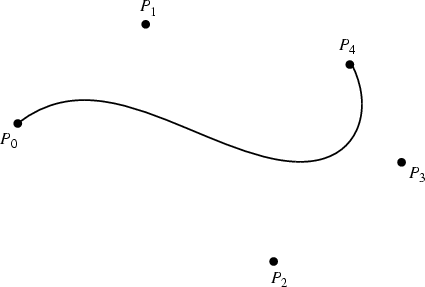|
|
|

Given a set of ![]() control points, the corresponding Bézier curve (or Bernstein-Bézier Curve) is given by
control points, the corresponding Bézier curve (or Bernstein-Bézier Curve) is given by

A ``rational'' Bézier curve is defined by
The Bézier curve always passes through the first and last control points and lies within the Convex Hull of the
control points. The curve is tangent to
![]() and
and
![]() at the endpoints. The
``variation diminishing property'' of these curves is that no line can have more intersections with a Bézier curve than
with the curve obtained by joining consecutive points with straight line segments. A desirable property of these curves is
that the curve can be translated and rotated by performing these operations on the control points.
at the endpoints. The
``variation diminishing property'' of these curves is that no line can have more intersections with a Bézier curve than
with the curve obtained by joining consecutive points with straight line segments. A desirable property of these curves is
that the curve can be translated and rotated by performing these operations on the control points.
Undesirable properties of Bézier curves are their numerical instability for large numbers of control points, and the fact that moving a single control point changes the global shape of the curve. The former is sometimes avoided by smoothly patching together low-order Bézier curves. A generalization of the Bézier curve is the B-Spline.
See also B-Spline, NURBS Curve